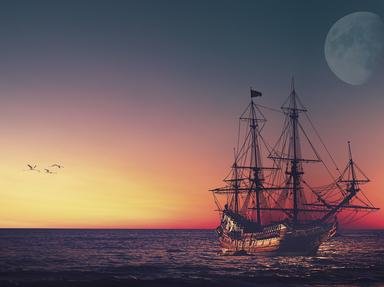Quiz Answer Key and Fun Facts
1. Led three voyages between 1594 and 1597 in search of the Northeast Passage
2. Made the first undisputed sighting of the Falkland Islands in 1600
3. Captained Duyfken, in 1606 the first European ship to make a documented landing on Australia
4. Named New York's East River "Hellegat" in 1614
5. First European to leave an artefact, in 1616, attesting to their landing in Australia
6. Sighted and named Cape Horn in 1616
7. Built oldest surviving Australian non-indigenous structure on West Wallabi Island in 1629
8. First known European landing in New Zealand, in 1642
9. Named Rottnest Island (1696) and the Swan River (1697)
10. First recorded European visitor to Easter Island, in 1722
Source: Author
looney_tunes
This quiz was reviewed by FunTrivia editor
gtho4 before going online.
Any errors found in FunTrivia content are routinely corrected through our feedback system.
